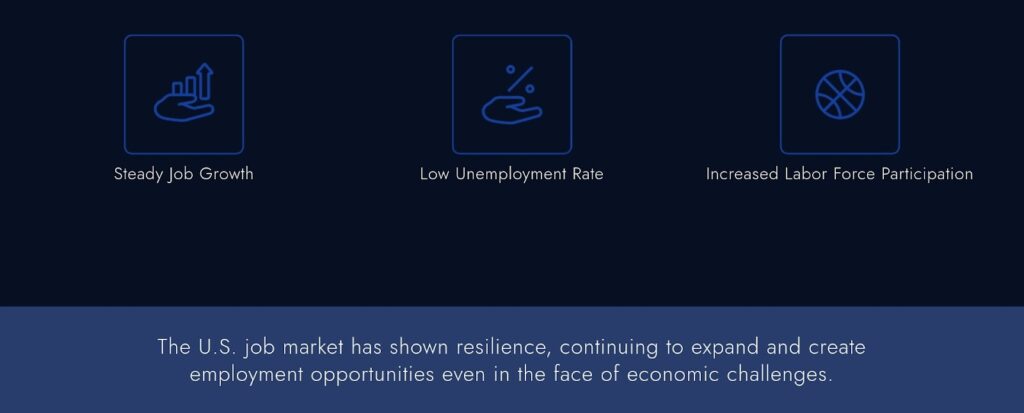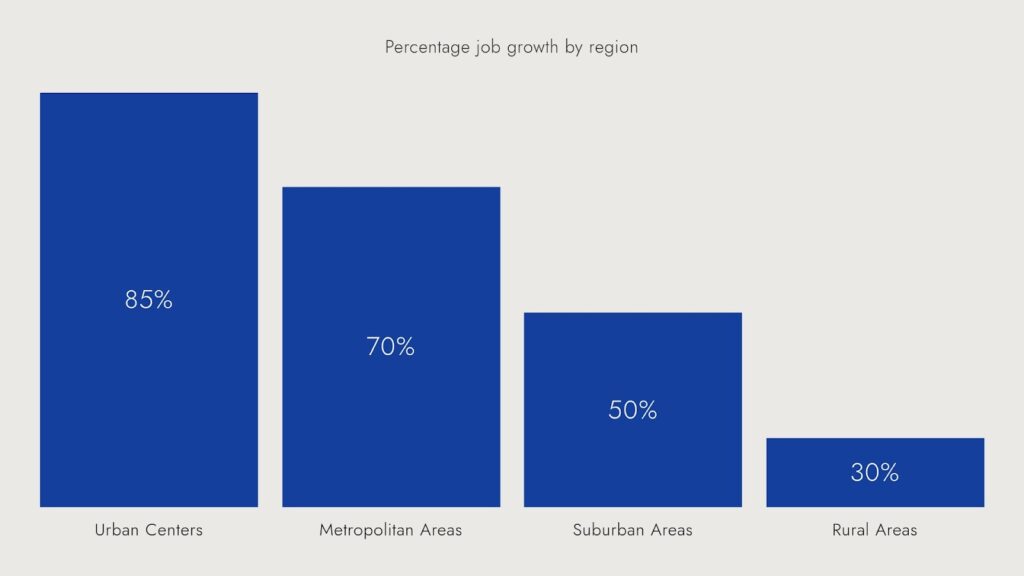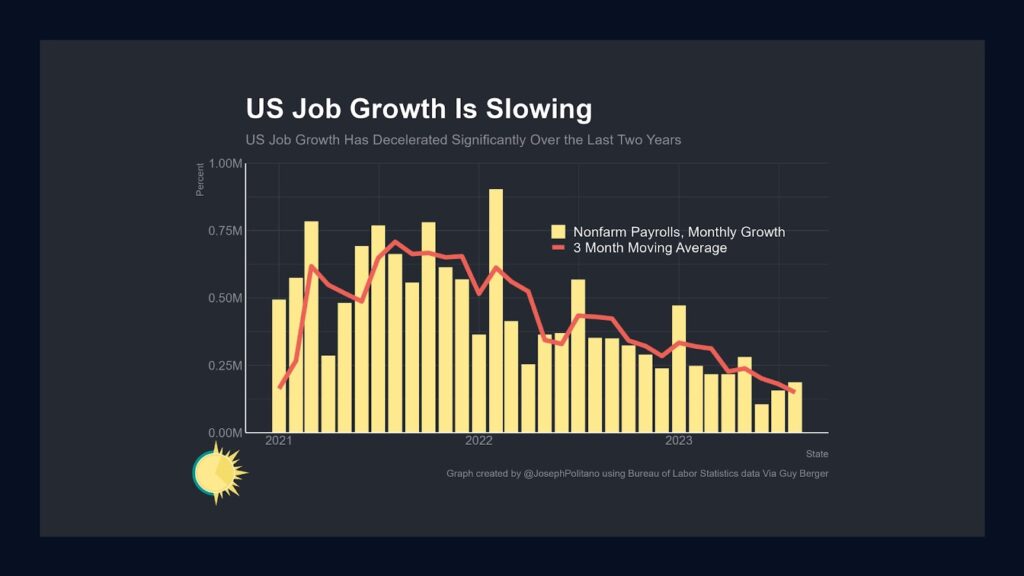In a world marked by fluctuating economic landscapes, the resilience of the job market is proving to be a silver lining. This article provides a comprehensive job data analysis, focusing on recent employment trends, sector-wise performance, and key insights from the latest job data report. Despite global economic challenges, the U.S. labor market has shown promising job growth, surprising many analysts. This in-depth analysis explores how key industries are performing, which demographics are most affected, and what strategies businesses can adopt based on the employment data report to thrive in uncertain times.
Overview of Current Job Market Trends
The U.S. job market has continued to expand, adding jobs at a steady pace despite inflationary pressures, geopolitical uncertainties, and interest rate hikes. According to the latest US job data report, job gains have exceeded forecasts, highlighting an economy that is managing to create employment opportunities even in difficult conditions.
While some industries are grappling with slower recovery, others have shown remarkable growth, such as healthcare, technology, and leisure sectors. In this job data analysis, we’ll break down the trends driving these numbers and provide insights into which sectors are leading the job growth.

Key Findings from Recent Job Data Reports
1. Overall Job Growth Remains Strong
Recent employment data reports indicate that the U.S. economy added over 200,000 new jobs in the last quarter, showing robust hiring activity. This growth has been spread across diverse sectors, reflecting a balanced recovery from pandemic-related disruptions.
The unemployment rate remains near a historic low at 3.8%, reflecting strong labor demand. While wage growth has decelerated slightly, the overall labor force participation rate has increased, suggesting that more people are reentering the workforce—a positive indicator amidst economic challenges.
2. Sectors Driving Job Growth
The latest job data report reveals that certain industries are leading the job recovery. Below are some of the key sectors showing resilience:
- Healthcare and Social Assistance: With an aging population and growing healthcare needs, the sector is experiencing high demand for skilled professionals.
- Information Technology: Despite layoffs in certain tech firms, the demand for IT talent remains strong due to increased digital transformation.
- Leisure and Hospitality: Tourism, travel, and hospitality sectors have seen notable rebounds, thanks to pent-up consumer demand.
- Construction: Infrastructure investments and housing projects have boosted hiring in the construction sector.
These sectors not only show resilience but also demonstrate the ability to adapt to evolving economic realities.
3. Regions and Demographics Most Affected
A close examination of the US job data report reveals regional disparities in employment trends. Urban centers and metropolitan regions have shown the fastest job growth, driven by the concentration of businesses, services, and technology hubs. However, rural areas have seen slower recovery, with economic challenges exacerbating existing disparities.
Demographically, young workers (aged 25–34) have seen faster employment recovery, driven by demand in technology, services, and healthcare. Conversely, older workers and certain minority groups are experiencing slower reintegration into the workforce, revealing an uneven recovery that requires targeted policy attention.

How are Economic Challenges Impacting the Job Market?
While the job data analysis indicates promising trends, several economic challenges continue to affect businesses and workers alike:
- Inflation and Interest Rates: Persistent inflation has led the Federal Reserve to raise interest rates, which affects consumer spending and business investments, particularly in sectors like real estate and retail.
- Global Supply Chain Disruptions: Although improving, disruptions in supply chains have impacted manufacturing and trade, leading to slower hiring in some sectors.
- Labor Shortages: Certain industries, such as healthcare and logistics, are grappling with labor shortages, forcing companies to increase wages to attract talent.
- Technological Displacement: Automation and AI are reshaping industries, creating new roles while making others redundant, particularly in manufacturing and low-skill service jobs.
How Businesses Can Navigate the Job Market Using Employment Data
The insights from employment data reports are invaluable for businesses to optimize their hiring strategies amidst economic uncertainty. Here are some strategies organizations can adopt:

1. Focus on Resilient Sectors
Businesses can prioritize hiring for roles in resilient sectors like healthcare, technology, and logistics, where demand remains strong. Workforce planning aligned with the growth sectors identified in the job data report ensures better resource allocation.
2. Leverage Regional Data Insights
Analyzing regional job trends allows companies to focus hiring in areas with strong economic activity while considering remote work options to access talent from slower-growth regions.
3. Optimize Workforce Flexibility
Businesses can adopt flexible hiring practices, such as contracting and gig work, to manage fluctuating labor demands and mitigate risks in case of further economic challenges.
4. Invest in Upskilling and Reskilling
Given the rapid evolution of the job market, companies can address labor shortages by investing in employee upskilling programs. This strategy ensures that businesses remain competitive and employees are equipped with the skills needed to thrive in a transforming economy.
5. Monitor Key Economic Indicators
Regularly reviewing employment data reports and tracking macroeconomic indicators will help businesses stay informed about shifts in the labor market. This proactive approach can guide strategic decisions related to hiring and workforce management.
Future Trends and Key Insights for Businesses
The US job data report suggests that while economic uncertainties will persist, the labor market shows remarkable resilience. Businesses can leverage job data analysis to make informed decisions, mitigate risks, and capitalize on emerging opportunities. Here are some actionable insights:
- Align Workforce Strategies with Industry Trends: Focus hiring efforts on industries with sustained growth, such as healthcare, IT, and construction, to maximize returns on workforce investments.
- Use Regional Data for Strategic Planning: Understand regional employment patterns to tap into talent pools in high-growth areas while considering remote work options for underserved regions.
- Prioritize Diversity and Inclusion Initiatives: As some demographic groups face slower job recovery, businesses should prioritize inclusive hiring practices to foster workforce diversity and enhance organizational resilience.
- Prepare for Economic Uncertainty: Maintain agility in workforce planning by balancing permanent hiring with flexible employment options to adapt to market shifts quickly.
- Leverage Technology for Data-Driven Decision Making: Utilize employment data tools and analytics to forecast labor market trends and plan long-term workforce strategies effectively.

Conclusion
The U.S. labor market continues to surprise with consistent job growth, despite facing economic challenges. Insights from the job data report demonstrate the resilience of certain sectors and highlight areas where businesses can strategically focus their efforts. Companies that integrate job data analysis into their planning will be better equipped to navigate economic uncertainty and capitalize on emerging opportunities.
By closely monitoring employment data reports and aligning workforce strategies with market trends, businesses can enhance their competitive advantage. Whether it’s focusing on high-growth sectors, investing in workforce training, or leveraging regional data for strategic hiring, organizations must remain agile and proactive. As the economic landscape evolves, staying informed with the latest job data report will be key to thriving in the future.
For businesses looking to leverage real-time job market data, sign up with JobsPikr to access comprehensive job intelligence and stay ahead of market trends. The job market is a dynamic force, and businesses that harness the power of job data analysis will not only survive but thrive in these challenging times.



